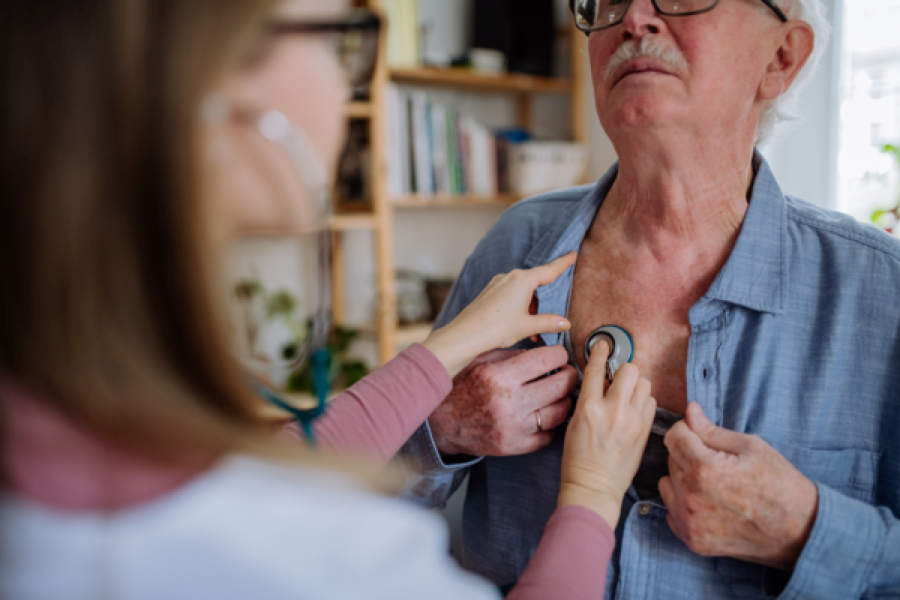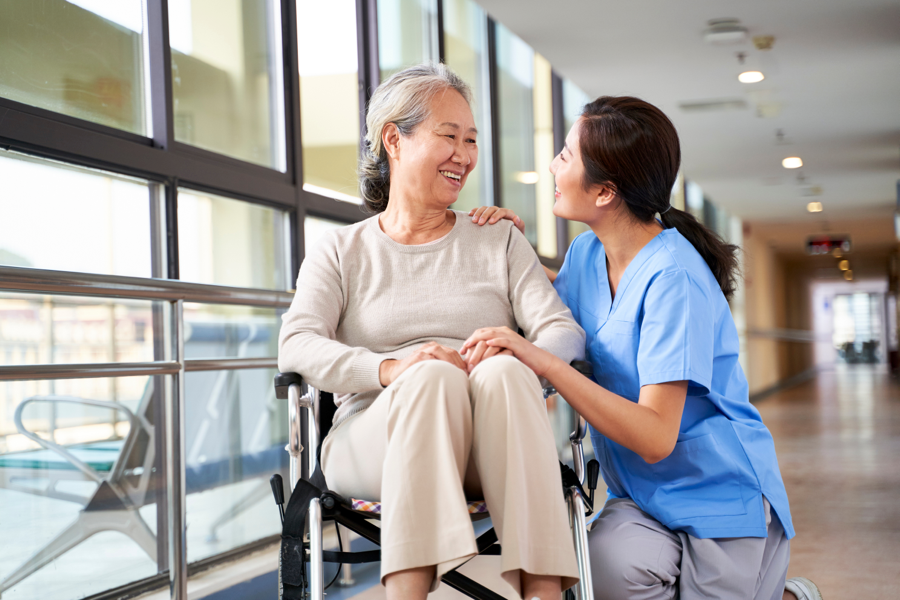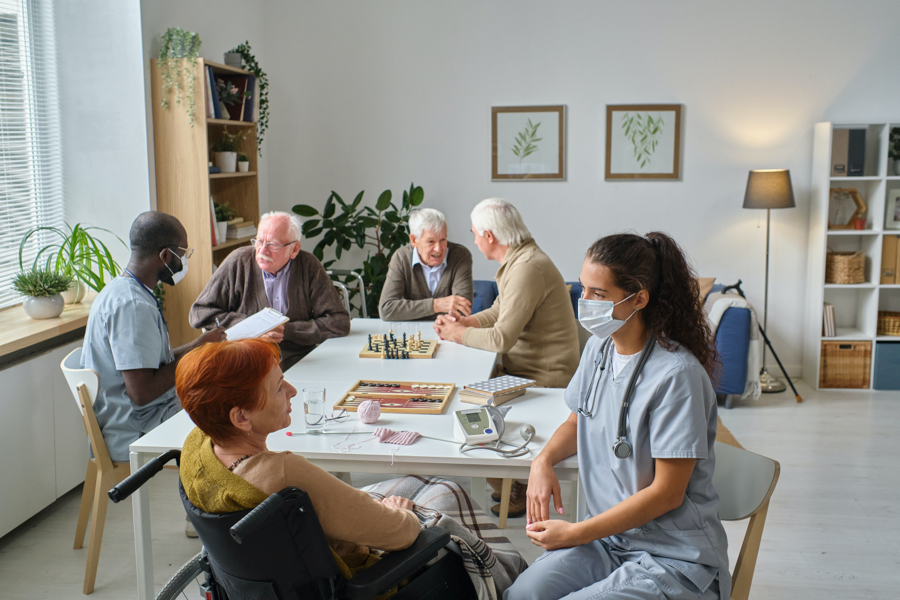
CLINICAL PRACTICE
Personal Care: Bathing, Dressing, and Grooming Techniques for CNAs
-
 EveryNurse Staff
EveryNurse Staff
- Last Updated: 05/14/2023

Personal care is an essential component of quality patient care. For patients who are unable to perform activities of daily living, such as bathing, dressing, and grooming, Certified Nursing Assistants (CNAs) play a crucial role in maintaining their health, hygiene, and self-esteem. In this article, we will provide guidance on personal care techniques for CNAs, focusing on bathing, dressing, and grooming.
The Importance of Personal Care for Patients
Providing personal care for patients is a fundamental aspect of nursing practice. Personal care involves meeting the patients’ needs for hygiene, comfort, and dignity. It can improve the patients’ physical and emotional well-being, promote healing, prevent infections, and reduce the risk of complications. Patients who receive personalized care feel respected, valued, and supported, which can increase their confidence and self-esteem.
Personal care is not just about maintaining cleanliness and preventing infections. It is also about providing emotional support and promoting independence. Patients who are unable to perform personal care tasks due to illness, injury, or disability may feel embarrassed, helpless, or frustrated. By assisting them with personal care, CNAs can help them regain their sense of control and dignity.
The Role of CNAs in Personal Care
Certified Nursing Assistants play an essential role in providing personal care for patients. They work under the supervision of registered nurses or licensed practical nurses, and their tasks include assisting patients with bathing, dressing, grooming, and toileting, among others. CNAs must be compassionate, patient, and attentive to the patients’ needs. They should also have excellent communication and interpersonal skills, as they will be working closely with patients and their families.
CNAs should also be knowledgeable about the patients’ medical conditions, medications, and treatment plans. This information can help them provide personalized care that is safe and effective. CNAs should also be aware of the patients’ cultural, religious, and personal preferences, as these can influence their attitudes towards personal care.
Building Trust and Rapport with Patients
The relationship between CNAs and patients is critical to the success of personalized care. Building trust and rapport with patients is essential to establishing effective communication and promoting comfort and safety. CNAs should introduce themselves to patients and explain their role in their care. They should also listen actively to patients’ concerns and preferences and ensure that they are comfortable with the personal care procedures.
CNAs should also be sensitive to patients’ emotional needs. Patients may feel anxious, depressed, or fearful due to their medical condition or hospitalization. CNAs can provide emotional support by offering a listening ear, a kind word, or a gentle touch. They can also encourage patients to express their feelings and concerns and help them cope with their emotions.
Ensuring Patient Comfort and Dignity
Assisting patients with personal care is a sensitive matter as it involves exposing their bodies and touching intimate areas. CNAs should prioritize patients’ comfort and dignity by providing a private and respectful environment, using appropriate draping techniques, and keeping the patients covered as much as possible. They should also use gentle and supportive touches, maintain eye contact, and communicate clearly throughout the procedure.
CNAs should also be aware of the patients’ physical limitations and adjust their approach accordingly. Patients with mobility or cognitive impairments may require more assistance and patience. CNAs should also be aware of the patients’ pain levels and use pain management strategies to minimize discomfort.
Bathing Techniques for CNAs
Bathing is an essential aspect of personal care that helps maintain skin integrity, prevent infections, and promote relaxation. CNAs should use appropriate techniques to ensure that patients receive safe and effective bathing while respecting their privacy and comfort.
Preparing the Bathing Area and Supplies
Before bathing the patient, CNAs should ensure that the bathing area is clean, comfortable, and free of hazards. They should gather the necessary supplies, including towels, washcloths, soap, shampoo, and other personal items. CNAs should also consider the water temperature and ensure that it is warm and comfortable.
Assisting with Bed Baths
Bed baths are suitable for patients who are unable to get out of bed due to illness, injury, or surgery. CNAs should ensure that the patient is comfortable and well-supported during the procedure. They should also use appropriate washing and rinsing techniques, paying attention to skin folds, dry areas, and pressure points.
Assisting with Showering and Tub Baths
For patients who can shower or take a tub bath, CNAs should ensure that the bathroom is clean and well-maintained. They should assist patients with undressing and entering the shower or bathtub, ensuring their safety and comfort throughout the procedure. CNAs should also provide support and assistance with washing, rinsing, and drying body parts.
Perineal Care and Incontinence Care
Perineal care and incontinence care are sensitive areas that require special attention. CNAs should use appropriate techniques to clean and dry the perineal area, paying attention to skin integrity and infection control. They should also use protective equipment such as gloves, gowns, and masks, as appropriate.
Post-Bathing Care and Skin Assessment
After bathing, CNAs should ensure that the patient is dry and comfortable. They should also assess the skin for any signs of irritation, redness, or wounds. CNAs should report any concerns to the registered nurse or licensed vocational nurse for further evaluation and treatment.
Dressing Techniques for CNAs
Dressing is an essential aspect of personal care that requires attention to patients’ comfort, safety, and preferences. As a CNA, it is your responsibility to ensure that your patients are dressed appropriately and comfortably. Proper dressing techniques can help prevent skin breakdown, promote independence, and enhance the patient’s quality of life.
Assessing the Patient's Clothing Needs
Before dressing your patients, it is crucial to assess their clothing needs. You should consider their activities of daily living, medical conditions, and personal preferences. For example, if your patient has limited mobility, you may need to choose clothing that is easy to put on and take off. If your patient has a skin condition, you may need to select clothing that is gentle on their skin.
Additionally, you should consider any special equipment or adaptive clothing that the patient may require.
Assisting with Upper Body Dressing
Assisting patients with upper body dressing requires patience, care, and attention to detail. You should ensure that your patients are comfortable and well-supported throughout the process. If your patient has a medical device, such as a feeding tube or a catheter, you should take care not to dislodge it while dressing them. You should also be mindful of any skin conditions, such as pressure ulcers or rashes, and take appropriate measures to protect the patient’s skin.
When assisting with upper body dressing, it is essential to encourage your patients to participate as much as possible. You can offer verbal cues, such as “lift your arm,” or physical cues, such as gently guiding their arm into a sleeve. By allowing your patients to participate in dressing, you can promote their independence and self-esteem.
Assisting with Lower Body Dressing
Assisting patients with lower body dressing requires similar care and attention to detail. You should ensure that your patients are comfortable and well-supported, paying attention to pressure points, skin conditions, and adaptive clothing. For example, if your patient uses a wheelchair, you may need to select pants that are easy to put on and take off while seated.
When dressing your patients, it is essential to communicate with them and respect their preferences. For example, some patients may prefer to wear loose-fitting clothing, while others may prefer more form-fitting clothing. By taking your patients’ preferences into account, you can help them feel more comfortable and confident.
Adaptive Clothing and Dressing Aids
As a CNA, you should be aware of adaptive clothing and dressing aids that can help your patients with dressing. These may include elastic waistbands, Velcro fasteners, slip-on shoes, and long-handled reachers. Adaptive clothing and dressing aids can help your patients feel more comfortable and confident while promoting their independence.
If your patient requires specialized adaptive equipment, such as a wheelchair or a prosthetic limb, you should seek assistance from healthcare professionals. They can help you select the appropriate equipment and provide training on how to use it safely and effectively.
Encouraging Patient Independence in Dressing
One of the most important aspects of dressing as a CNA is encouraging your patients’ independence. By promoting your patients’ independence, you can help them maintain their dignity and self-esteem. You can encourage patient independence by providing verbal and physical cues, offering choices, and acknowledging their efforts and successes.
For example, you can ask your patients which shirt they would like to wear or which pants they would like to put on first. You can also offer verbal cues, such as “you’re doing great,” or physical cues, such as gently guiding their hand into a sleeve. By providing positive reinforcement and encouragement, you can help your patients feel more confident and independent.
Conclusion
Providing personal care is a vital aspect of nursing practice, and Certified Nursing Assistants play a crucial role in ensuring patients receive appropriate and effective care. By using appropriate techniques and prioritizing patients’ comfort, safety, and dignity, CNAs can promote better health outcomes and increase patients’ satisfaction with their care.























